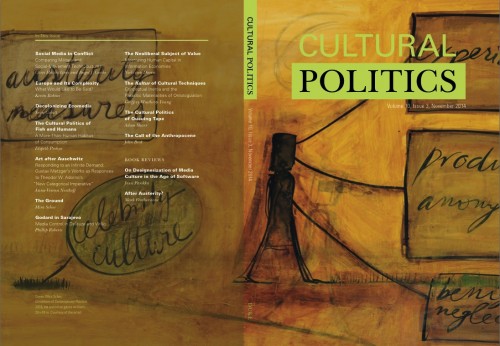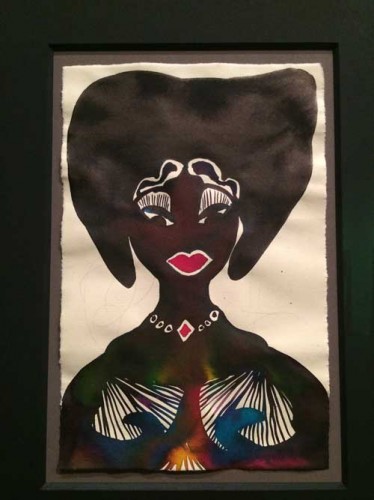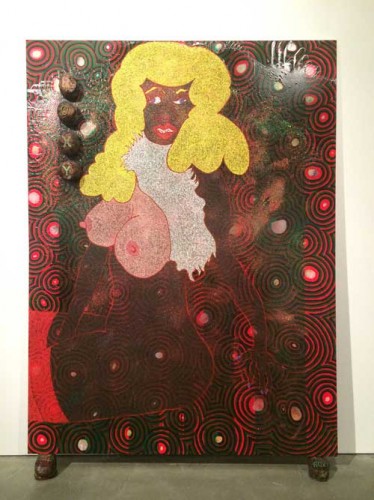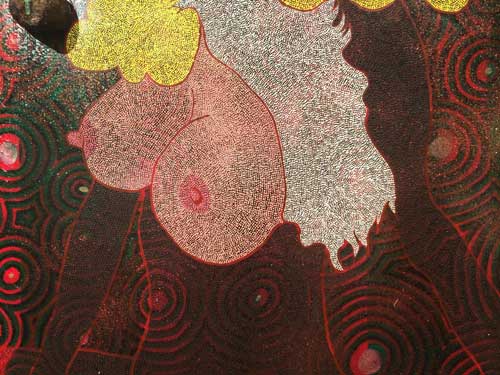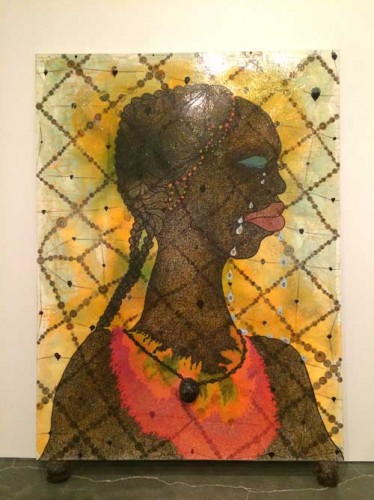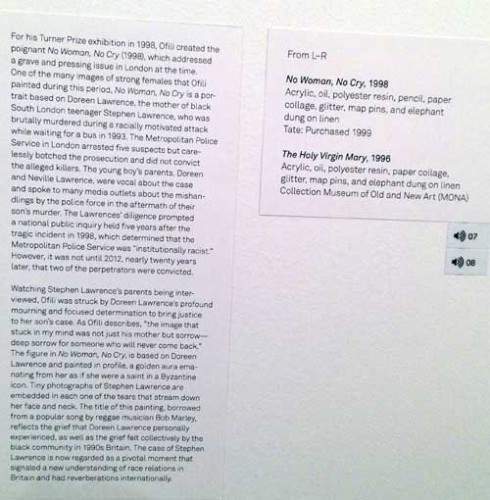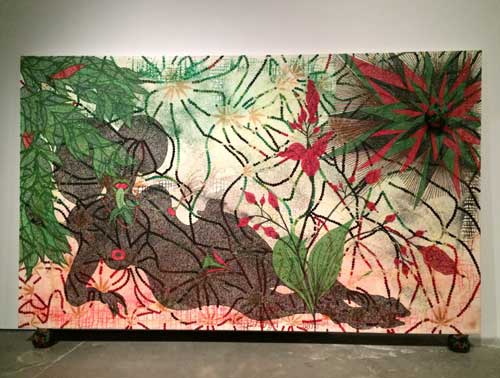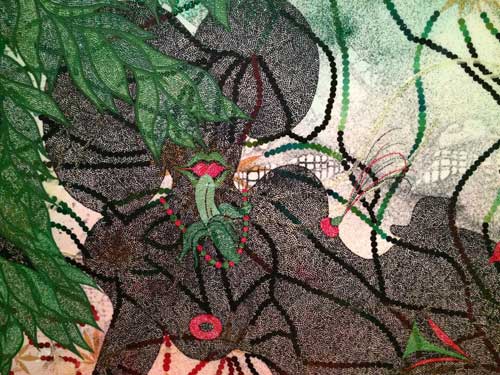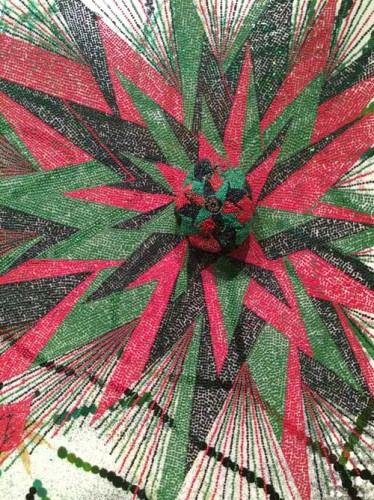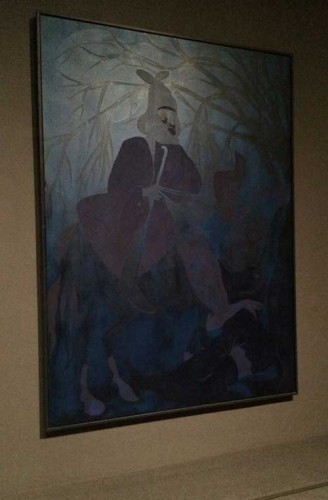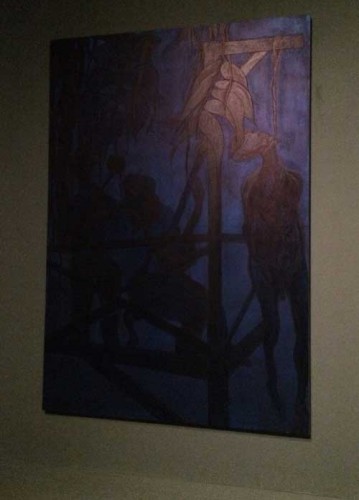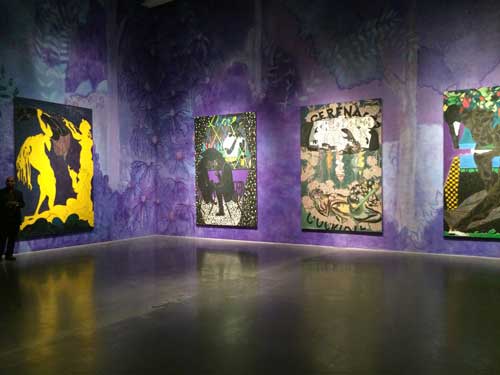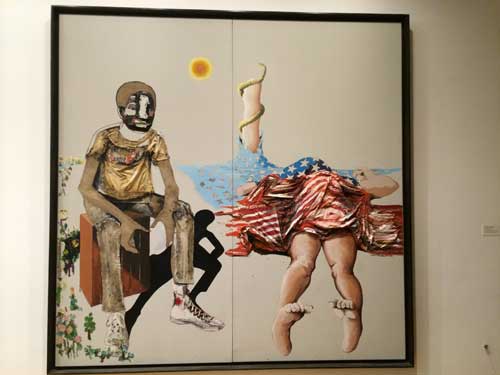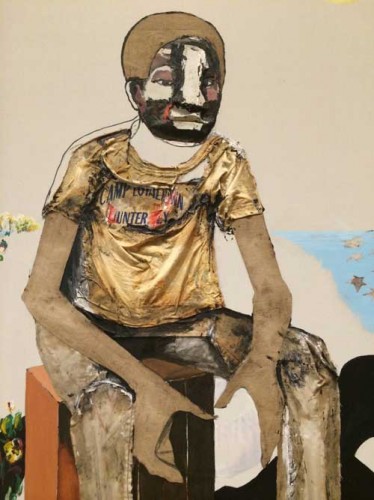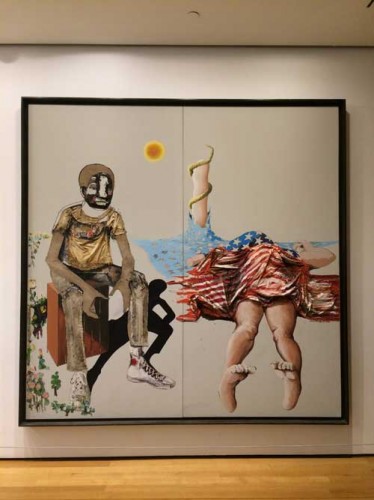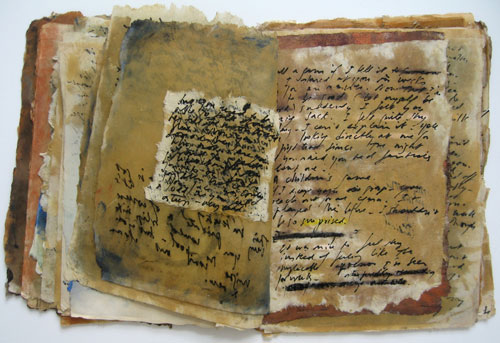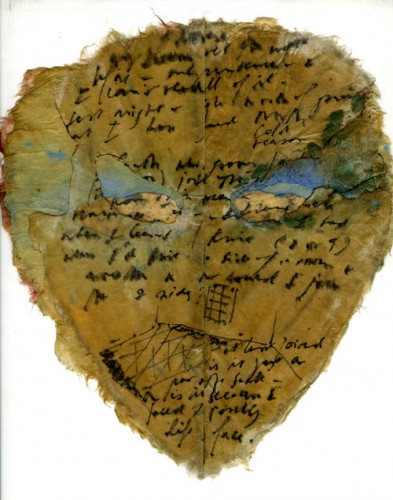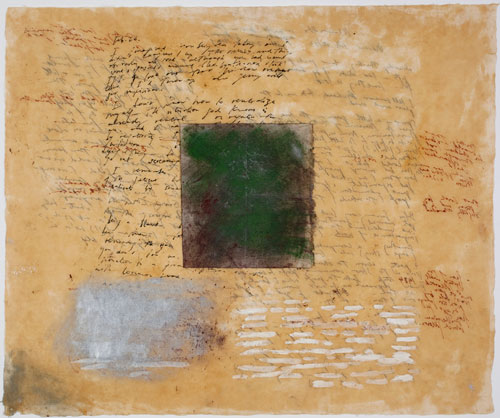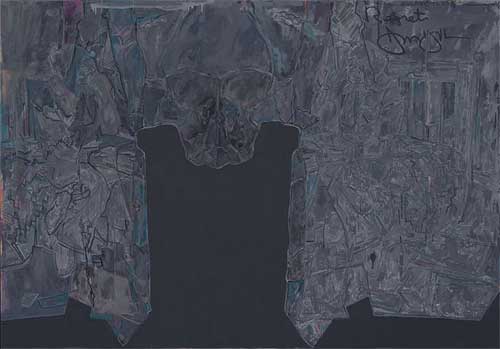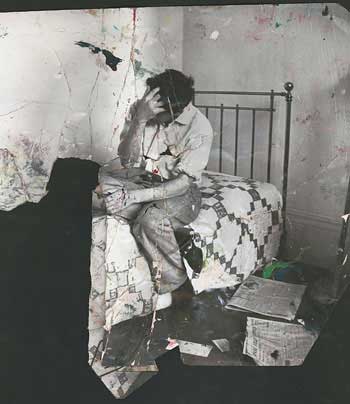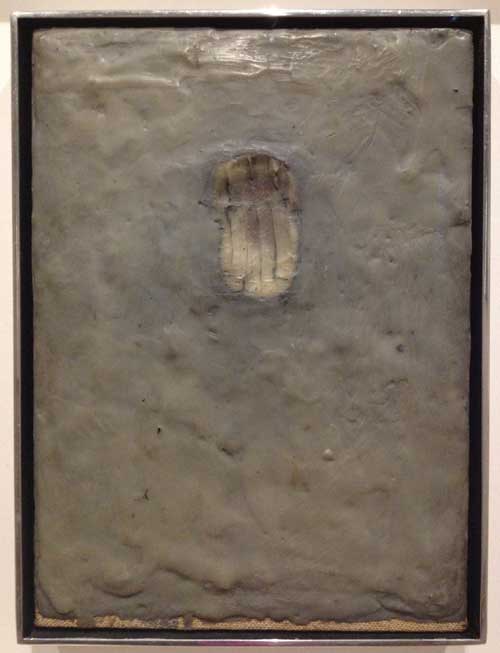When a cultural value or quality is lost or altered by time and fashion to such an extent that its first, indeed even its second and third meanings seem un-recuperable, it is hard for anyone who did not experience that value in its prime to even understand what has been lost. Thus it sometimes seems as if today everything, even “intimacy” in relation to artwork, has to be put into scare quotes and that it is always knowingly referential in such a manner that what is referenced is turned on its head. If it were truly intimate could we even perceive it in public situations? What is intimacy without coyness and preciousness? And what was the value of intimacy anyway? After all what is so wrong about spectacle?
This train of thought came to mind in a specific way this past week when the Museum of Modern Art announced that its plans to expand its footprint on 53rd street necessitated the destruction of the Museum of American Folk Art, a small building only ten years old, whose interior lay-out heavy on staircases, light on gallery space made it problematic as a museum space but interesting as an artwork through its dark sculptural facade and importantly different in its scale in a neighborhood of increasingly megalithic skyscrapers. It occurred to me that just as most people born since the mid-70s would have no experience of the 1939 to 1983 version of the museum I grew up in and that artists of my generation mourn as they would a beloved family member, people born since 1980 would hardly remember the 1984 redo. The relationship to art that the earlier museum provided, thus one’s understanding of what art was, and also the art that gets made today or seen today in museums have all so radically changed that I think it would be hard to understand what seems to have been lost and what makes the plans seem so appalling to so many. The old song goes, “You Don’t Miss Your Water (Till Your Well Goes Dry),” but if you never drank water you really wouldn’t know what people are talking about. I will try to address this situation in a number of posts.
In this post I will look at the work of Paul Klee, first by reproducing the entire text of T.J. Clark’s review of The EY Exhibition: Paul Klee-Making Visible, the Paul Klee retrospective currently at the Tate Modern. Clark’s text was published in the London Review of Books yesterday and sent out in this morning’s email from weisslink; second, by quoting from Walter Benjamin’s “Theses on the Philosophy of History”, inspired by Paul Klee’s etching Angelus Novus; and, third, by including a text I published in 1997, “Mr. Klee goes to Washington,” in which I imagined Klee’s manner and public persona (not the same general type of fellow as he might operate today) if he were to be put in the position of appearing on a cable TV talk show.
As introduction, I should say that when, in my teens, I began to form my idea of myself as an artist and I looked to the art I saw in museums and galleries for models of what I wanted to do (what I was in fact already doing as best I could) the work of Paul Klee was extremely important to me. Only after the emergence of feminist art history and criticism did I come to understand that the models that I found in art history, including Klee, Ernst, and Magritte as well as Flemish painting, early Renaissance Italian painting, Japanese Scroll Painting, Rajput and Mughal painting, contained traits that mainstream art and history associated with the feminine and therefore repressed and condemned, traits such as modest scale, ink and gouache media, detailed representation, narrative and autobiographical content, and imagination or fantasy, all elements which gave me visual methods and diagetic permission to do what I wanted and consider it part of art.
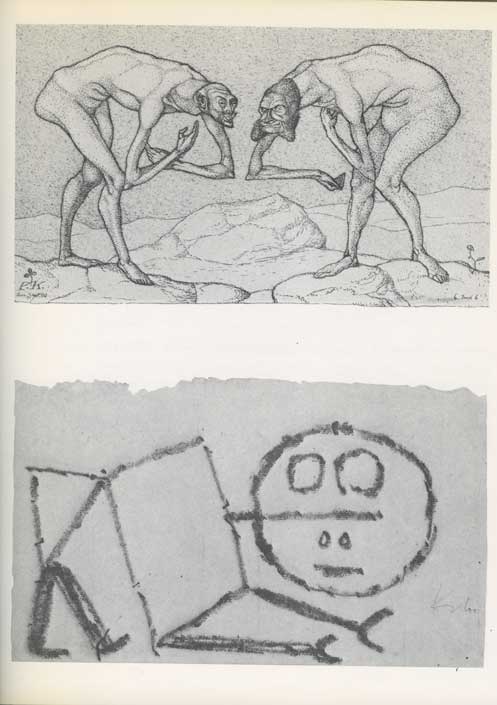
Paul Klee, “Encounter of two men, each believing the other to be of higher status,” (etching, 1903) and “Ein Oberkriecher” (“A Super Sychopant”), 1939.
The point is of course that I sought out these traits that were considered feminine in works by male artists because there were no female artists then readily available to serve as models, something I only became aware of when I finally began to see more works by women artists (Nancy Graves and Eleanor Antin being the first women artists I remember being given a Projects show at MoMA, in 1971 and 1973 respectively, and Frida Kalho and Florine Stettheimer being particularly important models) and, still later, when I read feminist analyses of the gendered development of the discipline of art history itself, as in Rozsika Parker and Griselda Pollock’s Old Mistresses: Women, Art, and Ideology.
I pored over Klee’s highly linear, darkly gnarled early figuration, imitated and copied as best I could the delicate and sometimes unusual surfaces of his small abstractions and abstracted still lifes, in general thinking to myself, well, these are works that reflect my own formal and narrative desires for art at that moment, and they are in the Museum of Modern Art, so there is some official permission there, within the oppressive patriarchal rules about what was or wasn’t art pervasive even in the 1960s.
I loved Klee, early Ernst, and Magritte to death and then turned away from them once I had gotten what I had needed to help me through the pass.
*
AT TATE MODERN by T. J. Clark
from London Review of Books, Vol. 36 No. 1 · 9 January 2014 pages 12-13: here is Clark’s full text
There was a time within living memory when a survey of Klee’s painting like the one at Tate Modern – 17 rooms, 130 works – would have been the event of the season (it’s on until 9 March). I remember even scoffing a little in the 1960s at London’s appetite for shows of the ‘tragic comedian’, antidote to Picasso’s vehemence or Matisse’s fundamental coldness. For good or ill, that moment is past. The galleries at Tate are mostly not crowded, and I had the impression that the respectful visitors, bending over the ropes to get a better look at the artist’s small things, found it hard, ultimately, to understand his cast of mind. ‘Klee is like somebody out of an E.T.A. Hoffmann story about the small-town Germany of the 18th century: comfortable, musical, modest and fantastic,’ Clement Greenberg once wrote. Or later in the same essay:
Klee is not subversive. He is well content to live in a society and culture that he has robbed of all earnestness; in fact, he likes them all the better for that. They become safer, more gemütlich. Far from being a protest against the world as it is, his art is an attempt to make himself more comfortable in it; first he rejects it, then, when it has been rendered harmless by negation, he takes it fondly back. For notice that Klee’s irony is never bitter.
Rendering the world ‘harmless by negation’ is not what we have been led to expect art, especially modern art, to do. And ‘taking it fondly back’ sounds genial to the point of smugness. Matisse is allowed to say, famously, that his art was intended as ‘a comfortable armchair for the tired businessman’. But that is because his art so often invites us not to believe him.
Klee’s whole attitude to art-making is elusive. Occasionally the poems he jotted down in his diary seem to help. There is one written in 1914, probably soon after war had been declared, which begins:
The big animals: despondent
at table: unsated.
But the small cunning flies
scrambling up slopes of bread
inherit Buttertown.
This seems like the script for a Klee picture, and the mood is almost optimistic; but the poem ends four verses later on a different note. The translation is Anselm Hollo’s:
The moon
in the railway station: one of the many
lights in the forest; a drop
in the mountain’s beard:
that it doesn’t trickle!
that it is not pierced by the cactus thorn!
that you
do not sneeze, and
burst
this bladder!
The little pictures in the Tate exhibition often seem to be turning towards us – towards the ‘you’ in the poem – and asking us not to sneeze, not to disturb the Klee moonlight. But the year of the poem is not auspicious, and the poem as a whole, although it does not have any other tactic – any other diction – to put in place of the small flies’ cunning, seems aware of what smallness and cleverness are up against in the early 20th century. ‘Man-Animal:/Clock of Blood’, reads the two-line stanza preceding the last one. Klee’s paintings almost always have some such ominousness in the background.

Paul Klee, “Flower Bed,” 1913
There was, we know, far worse to come. On 1 February 1933, two days after the swearing-in of Hitler’s coalition government, the Nazi paper Die Rote Erde carried a full-page article under the headline ‘Art Swamp in Western Germany’. The target was Jewish domination over the Düsseldorf Academy, which had been clinched, so the writer believed, by Klee’s appointment as professor two years before:
And then the great Klee makes his entrance, already famous as a teacher of the Bauhaus at Dessau. He tells everyone that he has pure Arabic blood [apparently Klee had let slip that his mother’s family may have come originally from North Africa], but is a typical Galician Jew. He paints ever more madly, he bluffs and bewilders [er blufft und verblüfft], his students are gaping with wide-open eyes and mouths, a new, unheard-of art makes its entrance in the Rhineland.
Klee himself was catching up fast at the time on the varieties of tyranny. He wrote to his wife, Lily, on 9 February: ‘I am reading (in Mommsen) about Caesar, after having read about Hannibal, and at the same time Stendhal’s Napoleon. Have to be a little while in the company of these kinds of geniuses. Pleasing to note that there are still other formats besides Hitler.’ Pleasing – though not for long. Klee and Lily made a break for Switzerland in December.
‘Bluffs and bewilders’ is the phrase, in the rooms at Tate, that will never entirely go away. It is very hard for us, I have been suggesting, to conjure back the feeling of the circumstances in which, for much of the 20th century, modern art got made. ‘Art Swamp in Western Germany’ may be of use. But even when we have caught a whiff of the savagery, venom and relentlessness that could dog a modernist’s footsteps in Klee’s lifetime, it still needs an immense leap of the imagination if we are to put ourselves in Klee’s shoes – to understand, and maybe to sympathise with, the little creatures scrambling in his labyrinths. Too many adjectives ending in ‘-ical’ – whimsical, mystical, magical, metaphysical – suggest themselves in front of his paintings, and seem to come up as excuses. Maybe because one senses that the ‘-ical’ that matters most to modern art – the physical, the here and now of the painted flat rectangle – is so hard for Klee to hold on to.
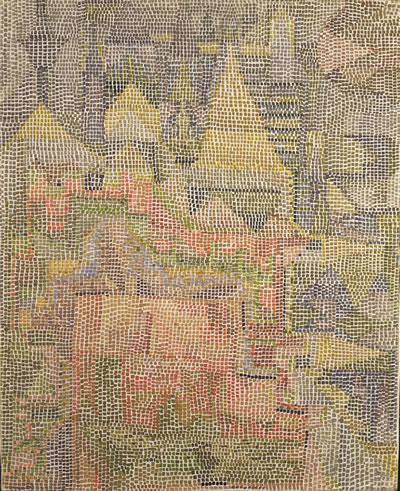
Paul Klee, “Castle Garden,” 1933
He knew it was. An artist as gifted and intelligent as Klee was must surely have looked back at his first efforts to be a cubist – to spread forms out additively in a rough geometric grid, to stay close to the surface, to have everything in a painting be solid and resistant – and have seen early on how turgid they were, how academic. (An artist’s ability to come to terms with cubism was, for Klee’s generation, the acid test. Klee’s struggle with the style in 1913 is in contrast to Schwitters’s or Miro’s or Mondrian’s, for whom the new idiom is immediately a liberation.) And Klee’s version of cubism was academic – paintings in the show like Plants in the Mountains and Flower Bed are fair examples – because cubist solidity was so remote from his native perceptual habits. It did not take him long to realise that if his art was to flourish he had to work with his very lack of certainty about where anything was in the world and how intimate with objects a painting ought to claim to be. The big animals would sit up at the cubist table; he’d find another way to Buttertown. The mottled, blotted, bending, backlit fields of colour he soon perfected, and the feeling of the surface in a picture (and space in the world) as essentially penetrable – always about to open or dissolve – were his true sensibility discovering its means.
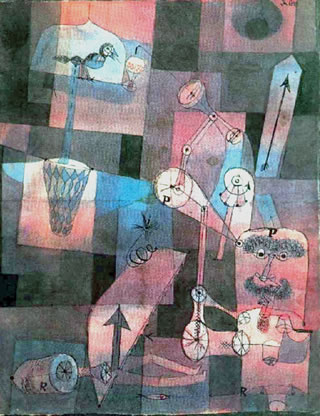
Paul Klee, ‘Analyse verschiedener Perversitäten,’ 1922
Cubism remained a matrix. Klee realised that others had bent it to their purposes: Mondrian’s sensibility, after all, was as remote from Picasso’s as Klee’s own. In and around 1923 Klee found a way to make even the tight cubist grid do the work he wanted – by inserting enough brighter and lighter squares into the chequerboard, each of them beckoning the eye through the foreground into depth, so that the surface came to look as if it were a kind of transparency ‘really’ hung across a glimpsed infinity on the other side. Once he had the basic idea he often returned to it, varying the size of the squares, the regularity of the grid, the translucency of the veil. The series of glittering watercolours and oils done in 1931 and 1932, using stippled dots or tiny oilpaint tesserae – paintings like Castle Garden or Semi-Circle with Angular Features – strikes me as the high point of this kind of space-making. The Whole Is Dimming (Das Ganze Dämmernd), reads the title of one of them, summing up the vision.
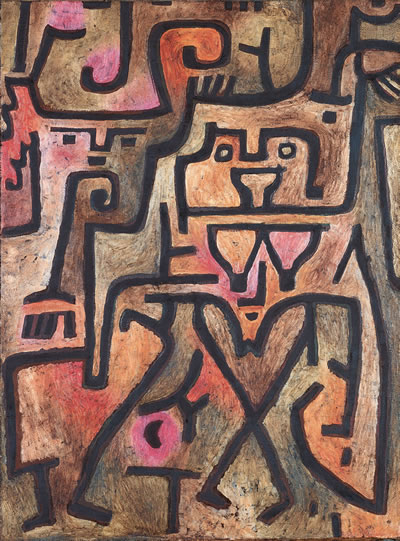
Paul Klee, ‘Forest Witches,’ 1938
The dimming whole is fragile. Whimsy and weakness are deliberately close much of the time in Klee – because the alternative, in the world of Die Rote Erde, is an undimmable grasp of totality. This is the worldview his art wished to refute.
It is not surprising that in the high age of modernism an art of Klee’s kind was written about superbly. Painting for him was intertwined with language. The rebus and hieroglyph were close. Titles regularly half-enter Klee’s picture space, inked in neatly along the bottom edge, and beautiful in themselves. Word and image are out to seduce us; and yet the best criticism of Klee has been not quite willing to fall under his spell. Greenberg was clearly out to resist. The first version of his great Klee essay appeared in Partisan Review in 1941 – a kind of obituary, written in dark times. The second, published nine years later, from which I have quoted, is crafted with extraordinary tact, but nonetheless seems to be trying most of the time to ‘place’ its object without condescending to him. Compare the inexorable Marxist Otto Karl Werckmeister. He spent long years, in the 1970s and 1980s, pursuing Klee down the alleys of compromise and equivocation that accompany the career of art in our time, and gave us our clearest – and in the end, most compassionate – picture of Klee face to face with war and revolution. We all go to Werckmeister – I do just as much as the writers in the Tate catalogue – for those moments at which, in a letter or scribbled sketch, the Man-Animals come crashing through the Castle Garden walls.
I am not sure the present survey, serious and exhaustive as it is, brings us close enough to the Klee (and the century) these writers are concerned with. The choice of paintings at Tate leans heavily on that made by Klee himself – the works he selected for key shows in Germany and Switzerland between the wars. This has its interest, but in practice I feel that it leads to a muffling and flattening of his art’s experimental flavour. There is a sameness and caution to the canvases displayed, almost at times a kind of stodginess. The rooms have too many ‘exhibition items’ and not enough failures, sidetracks, dashed-off drawings, whimsy tilting towards sweetness or nastiness – which were regularly Klee’s ways of trying to escape from his own good taste. Analyse verschiedener Perversitäten, to quote a nervous title from 1922. Klee’s selections (as with anyone’s) have not always stood the test of time. The clusters of works one comes across in collections put together more recently, by single opinionated connoisseurs – I remember a dazzling room at the Sammlung Rosengart in Lucerne – often seem to me to serve the artist better. I missed Berlin’s incomparable A Child’s Play, and MoMA’s Around the Fish, and stark paintings and pastels from towards the end of Klee’s life: Double, Angel of Death, The Last Still Life.
But there are great paintings here. Forest Witches (Wald-Hexen), from 1938, is one of a group of works done in exile where the world left behind, in all its cruel earnestness, is, maybe regretfully, faced head-on. Erd-Hexen from the same year, slightly smaller, moves closer still to the Nazis’ own Brothers Grimm language. Bewitched-Petrified (Verhext-Versteinert), done in 1934, might even be imagining, or hoping for, a Nazism frozen in its mythopoeic tracks. It will continue to be a question, sadly, whether singing fascists their own song in this way ever budged anything (real or ideological) an inch. But Wald-Hexen is a strong work, and makes Klee’s overall attitude to art more comprehensible. The balance he spent a lifetime looking for in his colour and touch, between eerie fragility and just enough decisiveness – insect lightness contending with a half-self-mocking monumentality – was never struck better.
T.J. Clark
****
From what I can tell, not having seen this particular retrospective exhibition, T.J. Clark does not find among much of Klee’s work that is included in this exhibition a contemporary hook or key back to the view of modernism that he represented. It seems that, with the exception of the bolder forms in Klee’s last works done in the immediate shadow of World War II, he agrees with Greenberg, who after all was engaged along with other figures in the New York School in a resituating of modernism in an American Sublime which feminized the sensuality and whimsy of European art, except for the major figures of Picasso and Matisse, and even then. The late works are in fact quite different and, again speaking personally, renewed my interest in Klee’s work,
*
I looked in Clark’s review for some mention of Klee’s 1920 dry point etching Angelus Novus, which is described in Walter Benjamin’s noted 1940 essay “Theses on the Philosophy of History”:
IX
My wing is ready to fly
I would rather turn back
For had I stayed mortal time
I would have had little luck.
– Gerhard Scholem, “Angelic Greetings”
There is a painting by Klee called Angelus Novus. An angel is depicted there who looks as though he were about to distance himself from something which he is staring at. His eyes are opened wide, his mouth stands open and his wings are outstretched. The Angel of History must look just so. His face is turned towards the past. Where we see the appearance of a chain of events, he sees one single catastrophe, which unceasingly piles rubble on top of rubble and hurls it before his feet. He would like to pause for a moment so fair [verweilen: a reference to Goethe’s Faust], to awaken the dead and to piece together what has been smashed. But a storm is blowing from Paradise, it has caught itself up in his wings and is so strong that the Angel can no longer close them. The storm drives him irresistibly into the future, to which his back is turned, while the rubble-heap before him grows sky-high. That which we call progress, is this storm.
It would be interesting to know what Clark’s present thoughts are about this particular Klee work, which would seem to be part of the lost condition of modernism to which Clark says the current exhibition at the Tate does not give us access.
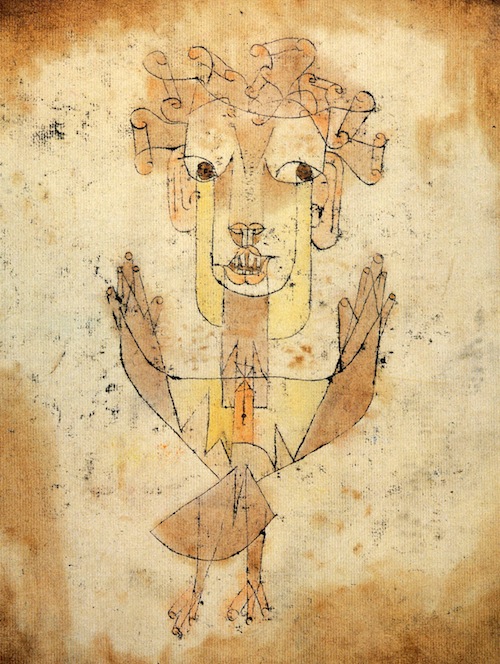
*
I wrote the essay “Mr. Klee Goes to Washington” in 1997 about contradictory cultural developments at the time, when the ripple effects of the culture wars in the 1980s were still felt in institutional censorship of transgressive art and resulting self-censorship by artists of provocative content, at the same time as artists tried to place such content in popular media–for example in 1990 Marilyn Minter bought a 30 second spot on Late Night with David Letterman for her video work “100 Food Porn”–and to place themselves within the celebrity /notoriety culture of antagonistically organized media platforms such as Politically Incorrect with Bill Maher, a comedy show which ran on the Comedy Network from 1993 to 2002: I wrote it after performance artist Karen Finley appeared on the show and I tried to imagine how Paul Klee would have fared in that situation.
Here is my 1997 text, which appeared in New Observations #116:
MR. KLEE GOES TO WASHINGTON
Artists today struggle to work and to survive within an atmosphere permeated by an ongoing and steadily increasing pressure to abandon any type of marginal art practice –– a pressure all the more daunting when, for most, if not, it could be argued, for all artists, some form of marginality, whether economic or cultural, is a persistent condition. The artist who is not represented by a gallery may feel marginal in relation to the artist who exhibits regularly; the artist with a respectable local career may feel marginal in relation to artists represented in international exhibitions, and they, in turn, to the few artists receiving consistent art world wide attention for a number of years. All of these may feel marginal in relation to TV, pop music, and sports stars –– only a relative few want to be like Jasper, but doesn’t “everyone want to be like Mike”? And even such celebrity figures must acknowledge cultural and historical marginality in relation to Bill Gates (beyond that point I won’t speculate!).
The pressure to abandon marginal practice is irrational in the sense that it is not clear to what one should conform, nor that it will help even if you figure it out, because, while success is based on work’s current use value to contemporary discourse, the work must be, in some sense, genuine. Nevertheless, it seeps into the studio, even poisoning the artist’s relationship to her work, like anger at a beloved child who is flunking out of school.
The pressure comes from widely disparate segments of society as a whole and of the cultural world. The destruction of the NEA is only the most visible symptom of mainstream demonizations of what artists do. The control of cultural outlets, from publishing houses to cable TV networks, by mass entertainment conglomerates threatens to police content for purely mass market value. These culture monopolies are all the more dangerous because, unless the consumer is constantly tracking company ownership, sameness and safety of product may seem like cultural fact rather than corporate strategy. Curiously, it seems that it is only the language of the product (literally, in its degree of rawness; aesthetically, in terms of its discursive strategies; situationally, in its predetermined space of “high art” or mass entertainment) rather than its subject matter that determines marginality. For example, successful network TV programs such as Seinfeld or E.R. –– both strongly supported by ratings and advertisers –– often deal with controversial subjects such as masturbation, homosexuality, rape, or AIDS that would be condemned as unsuitable subjects for government funding if mediated by the codes of the art world.
While the consequences of these developments may be dire for individual artists and small artist–run organizations, more insidious to continued art practice are pressures coming from within the art world.
On the one hand, especially since the 1980 election of Ronald Reagan, the government has seen artists as easily dismissible yet dangerous subversives. On the other hand, during the same historical period, postmodernist art theory targeted certain types of artists’ roles as well as certain types of art practice. For example, the romantic image of the artist as alienated rebel –– a familiar and even comforting role for artists compelled to ascribe meaning to their struggle for attention and economic survival –– was unveiled by Marxist–inspired criticism as a complicit or self–deluded pawn and lackey of the bourgeoisie ( As, for example, in Benjamin Buchloh’s analysis of clown imagery in works by early twentieth–century vanguard artists such as Picasso and Beckman, in his essay, “Figures of Authority, Ciphers of Regression,” October 16 (spring 1981): 39–68) . At the same time, critiques of the auratic, hand–touched, unique art object contained an implicit condemnation of private art practice so that the refuge of the studio came to represent cultural escapism rather than a potentially fruitful escape from a market–driven art world.
Further, from the eighties into the nineties, the predominant prescription for a way out of this undialectical position was to recognize one’s role as just another cultural worker within an ideological framework and to attempt the unmasking and subversion of this frame by mimicry of its forms and tropes through appropriation of mass media images and technologies of representation. In the ensuing effort to mimic mass commodity culture, the artist has been drawn down a path of increasingly excessive theatricality and romancing of the abject. Now the cycle is complete and the artist again is self–imaged as a clown within bourgeois culture and proud of it (witness recent fun house installations by Damien Hirst, Paul McCarthy, and the Chapman brothers).
This summer I heard Karen Finley speak on an artists’ panel. She announced that she wants artists to be celebrities just like actors or sports stars. In that pursuit, she had appeared on Bill Maher’s Politically Incorrect but, she admitted, had been frustrated in her efforts to state her point of view. A few weeks later, I channel surfed my insomniac’s way into a rerun of that particular show. Finley, who at her best is a manic and occasionally brilliant stage presence, and at her worst is at least self–indulgently theatrical in a way that you might think would suit the requirements of the Christians v. the lions atmosphere of Maher’s show, seemed tamed by an effort to present herself in a mainstream way –– she was dressed in a relatively conservative black suit and had clearly been made up for TV –– and she was indeed unable to successfully counter Maher’s and some of the other guests’ flat out condemnations of government funding of avant–garde art. She couldn’t condense her views or speak fast enough, she was too nervous to be funny, and she didn’t fight dirty. Given the opportunity to convert notoriety into celebrity by performatively enacting transgressive art practice on network television, she lost her nerve and behaved herself. Or, perhaps, despite herself, that part of her persona that speaks art language and contains real criticality of social injustice could not function in the world of celebrity. Marginality turned out not to be a choice, it is not merely instrumental, not a condition one can shed at will, but a direct outgrowth of moral and aesthetic beliefs fundamentally (even when unintentionally) at odds with the mainstream.
As Finley spoke, I considered what kinds of art works would correlate to success in a superficial and sensationalist forum. It seemed that, as ever, quietude and subtlety were doomed by the requirements of a sound bite culture. I began to imagine various artists of the past appearing on Politically Incorrect: Picasso might have managed it, but can you picture Paul Klee on such a show? Or what kind of pictures he’d have to be making to be able to hold his own in such an arena?
“So, Paul, the Kennedy men, rapists or abused children?” “Vel, hem, Herr Maher, I tzink …”
Note: Significantly, in 1997 my spell–check program recognized Picasso as a word, but stopped at Klee as an error, “not found,” pointing to the way that Picasso is a trademark product: he is the prime exemplar of the commodifiable, Protean rebel, artist persona, popularized in fiction and the public imagination, whereas Klee is, well, just an artist.
*
Today I would surely cite different celebrities as examples–at this point Michael Jordan is a remote figure in relation to Beyoncé–and numerous artists and even art critics have successfully entered a more spectacular realm, though they still don’t always fare as well as their artworks when they personally appear in the media spotlight, they are still more the ineffective Wizard of Oz behind the curtain than OZ the great and powerful–note how off-key Jeff Koons can seem when interviewed on TV, in photographs where he is posed with his works or his family, or even quoted in print.
Some of Paul Klee’s work may be or at least appear now as a bit dated and fey in drawing style. Our ability to understand his work is affected by the amount of works done under his influence, which often fall under the sign of what I’ve called “Trite Tropes, Clichés, or the Persistence of Styles.” In that essay I wrote of one persistent style cliché:
One persistent style that emerges from the continued desire since the advent of the monochromatic flat abstract painting to have your cake and eat it by placing an image of some sort on a flat background is the pictographic painting, popularized by artists such as Stephanie Brody Lederman in the 1970s and more recently artists such as Squeak Carnwath. In works of this style type, the background is usually almost flat: the diagrams, pictograms, (as well as words) are placed on a ground that may be geometrically framed but also painted in an atmospheric, variegated painterly or textural manner. These works owe a great debt to Paul Klee’s introduction of a pictographic vocabulary into cubistically organized flat space. His reference to the childlike and the “primitive” in relation to previous types of representation represents a historically situated philosophical intervention within an aesthetic imaging system, it is not yet a habit without thought. For some reason Klee can get away with it — I am tempted to add, or can he? I ask that mischievous question only because the proliferation of such pictographic paintings throws a poor reflection back onto Klee that only can be eliminated by looking at actual works by Klee, which usually retain their formal rigor and the charm of the lyrical and whimsical pictorial elements.
In other words I too may find it hard to see in the same way as before some of the works that once gave me the permission to be a certain kind of artist. But that one would feel now that Klee’s “whole attitude to art-making is elusive,” according to Clark, may speak as much to our culture of spectacular narcissism and self-commodification of any kind of Otherness as to any weakness in Klee’s oeuvre. When Klee’s work and its presence at MoMA gave me courage, I never thought of his work as being elusive, but, rather, allusive so that it suggested style, methodology, and approach to form or narrative or fantasy for my own explorations. If I can’t always get back to the viewpoint I had when I was 17 it is because I am as much part of 24/7 spectacle culture as anyone else, and must work hard to slow down and look at the delicate and the allusive.
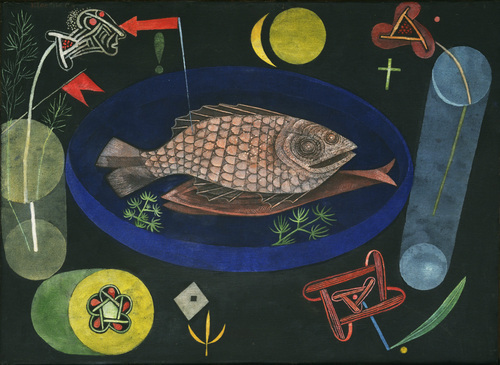
Paul Klee, Around the Fish, 1926. Oil and tempera on canvas mounted on cardboard, 18 3/8 x 25 1/8″, Collection of the Museum of Modern Art.




